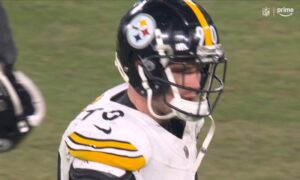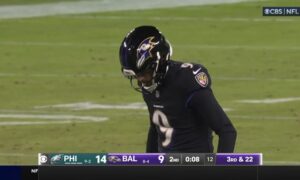NFL Commissioner Roger Goodell spoke publically yesterday afternoon for the first time since the video of Ray Rice inside the elevator surfaced a week and a half ago. He expressed remorse for his own shortcomings while remaining resolute that he would not resign.
He stressed his determination to “get it right” from here on out in terms of the league’s personal conduct policy, which he suggested might not be fleshed out and out of committee until around the time of the Super Bowl.
He talked about accountability while ignoring the fact that merely acknowledging error does not equate to accountability; Goodell went on to express confidence in the security of his job at the behest of the league’s 32 team owners groups.
But a late afternoon article published by ESPN substantially overshadowed everything that the commissioner had to say, purporting to expose elements of the role that the Baltimore Ravens leadership structure and members of the league played in trying to quietly put the Ray Rice saga to bed with minimal harm to either the franchise or the NFL.
And quite frankly I would find it quite troubling if everybody managed to come out of the other side of the tunnel unsoiled if even half of the claims made in the article penned by Don Van Natta and Kevin Van Valkenburg are true.
Subtitled “purposeful misdirection by team, scant investigation by NFL”, the piece begins by tracing the timeline of how Ravens ownership learned of the gory details contained on the elevator footage mere hours after it occurred, which was first relayed to team director of security Darren Sanders.
Sanders was described the video in detail soon after the incident took place, after Rice had informed the team of the altercation, by an Atlantic City police officer over the phone as he was reviewing the security camera footage.
The article contends that Sanders relayed the information “to his bosses” the same day, which, whether directly or indirectly, reached team owner Steve Bisciotti and president Dick Cass.
So as not to regurgitate too much of the article, the long and short of it is that Rice’s eventual defense attorney, Michael Diamondstein, obtained the elevator footage in April, which he subsequently described to Cass as “f—ing horrible”, as “Ray knocked her the f— out”.
From that point on, the trajectory of the team’s, and the league’s, course of action was to prevent that video from surfacing, which in large part influenced the decision to enter pretrial intervention, which the articles suggests was an extremely rare opportunity in cases such as Rice’s.
Cass and general manager Ozzie Newsome accompanied their embattled running back to meet with Goodell in June, which is rare in itself, the article suggests. They spoke on his behalf, and after the initial conversation, the commissioner spoke to Rice and his wife privately, in an exchange the purportedly centered around him coming out the other side a borderline role model, as a spokesperson against domestic violence.
The Ravens organization, the article claims, presumed that Goodell had already seen the elevator footage by this point, though he continues to maintain that he only saw it when it was leaked.
He has no choice but to maintain that, because the course of his subsequent actions is predicated upon that being true. He, and the Ravens, completely seized upon the opportunity provided by the release of the video to demonize Rice and cut ties with him publicly in a way that would make them look like the good guys.
This is despite the fact that, for all of their efforts to keep their story straight, Newsome, whom Rice looks to as a father figure, could not help but admit that the former Raven had not lied to them nor misrepresented what took place in the elevator, and in fact had shown great contrition and honesty—privately—about the incident.
After learning of his release and suspension, Rice received a pair of text messages from Bisciotti telling him that it was great having him as a player, and that there would be a job waiting for him with the Ravens when he was “done with football”, all while the team’s public statements vilify him as a liar.
As difficult as it may be to find sympathy for Rice, there’s little question that this article suggests he was betrayed after the fact by an organization and a league that tried to do everything in its power to try to keep the public relations nightmare of the elevator footage out of the public eye.
Once it was out there, they crucified him to save themselves, but if the claims in this article are true, there may yet be a price to pay for some of the characters in this story. I have only touched on some of the facets of this narrative; it’s well worth reading the whole thing on your own, linked here again for convenience: Link.







